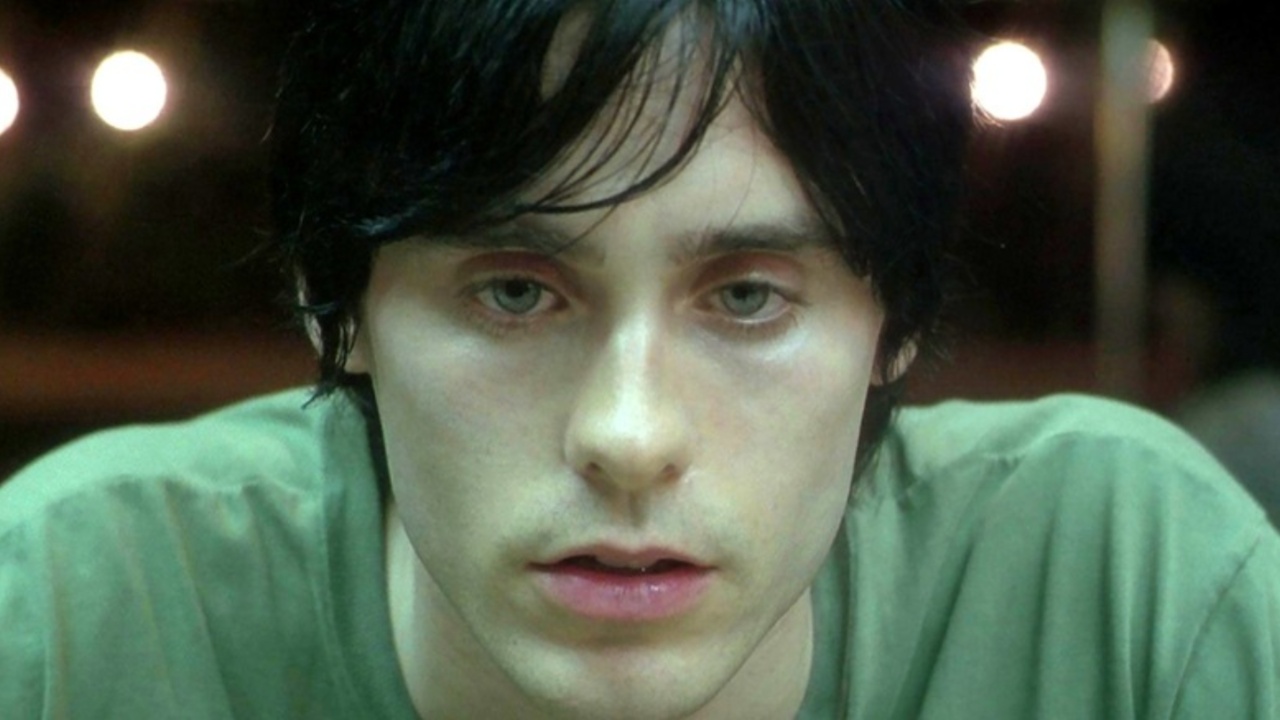Contrary to what its title implies, Requiem for a Dream offers no solace or redemption. Darren Aronofsky’s harrowing film is a relentless portrayal of addiction, obsession, and self-destruction. Recognized as one of the most disturbing movies ever made, it cements Aronofsky’s reputation as a director of emotional extremes. Through haunting visuals and fragmented storytelling, the film explores how four characters spiral into chaos, each chasing a dream that leads only to ruin. By the end, their bodies and minds are as decayed as the illusions they once pursued.
The story unfolds through four interconnected narratives centered around Harry, Marion, Tyrone, and Sara. Harry, played by Jared Leto, and Tyrone, portrayed by Marlon Wayans, are heroin addicts chasing the fantasy of becoming successful drug dealers. Marion, played by Jennifer Connelly, dreams of being a fashion designer but sinks deeper into addiction. Meanwhile, Sara, portrayed by Ellen Burstyn, becomes consumed by television fantasies, longing for a game show appearance that symbolizes her lost youth and validation. Their paths cross and diverge as love, ambition, and addiction intertwine, driving them toward inevitable tragedy.
The Brutal Collapse of Dreams and Love Under the Weight of Addiction
Each character’s downfall is brutally depicted in the film’s climax. Harry and Tyrone’s plan to buy drugs directly from a supplier fails when Harry’s arm becomes gangrenous from repeated injections. Their arrest seals their fate, destroying their ambitions. Marion, left desperate and alone, turns to prostitution under the coercion of a violent pimp named Big Tim and loses every shred of her dignity. Sara’s fate is equally devastating; after becoming addicted to diet pills, she slips into psychosis, unable to distinguish her television-induced fantasies from reality, eventually ending up institutionalized and forgotten.

Harry and Marion’s relationship embodies the film’s central theme of love corrupted by addiction. Initially driven by shared dreams, their bond deteriorates as drugs and desperation take over. When Harry encourages Marion to degrade herself for money, the emotional rift between them becomes irreversible. Harry’s physical decay mirrors their relationship’s collapse as his refusal to confront his infection leads to the amputation of his arm. Aronofsky uses this grotesque imagery to symbolize how addiction consumes both body and soul, leaving nothing but fragments of what once was.
Illusions, Despair, and the Destruction of Dreams in Aronofsky’s Tragic Masterpiece
Recurring imagery in Requiem for a Dream, such as Harry’s dream of a pier where Marion fades into darkness, symbolizes the unattainable nature of their desires. Each character clings to illusions that represent their dream: Harry’s fantasy of love, Marion’s of success, Tyrone’s of maternal comfort, and Sara’s of fame. These illusions provide fleeting comfort but ultimately become their undoing. Sara’s storyline is particularly tragic, as her loneliness drives her into a delusional world where television becomes her drug. The line between fantasy and reality dissolves completely, leaving her isolated within her own mind.
The film’s ending is not merely about addiction; it is a requiem for dreams corrupted by obsession. Aronofsky presents a haunting message that the pursuit of dreams without grounding in reality leads to alienation and destruction. Marion’s reflection scenes serve as painful reminders of her fading identity, while Harry’s missing arm becomes a permanent scar of his denial. Requiem for a Dream closes with each character curled into a fetal position, consumed by despair. Their requiem is not for their lives, but for the dreams that once gave them hope and ultimately led them to ruin.



